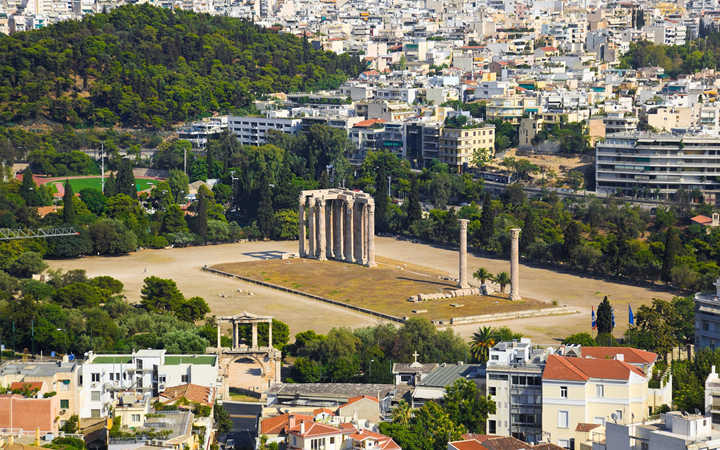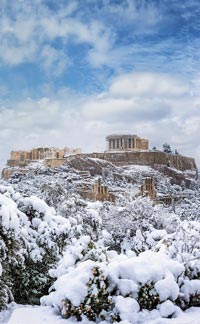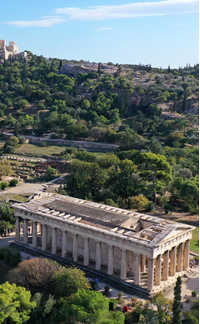Tucked between the Acropolis and the National Garden, the Temple of Olympian Zeus (Olympieion) stands as one of Athens’ most monumental yet overlooked landmarks. Though only 15 of its original 104 Corinthian columns remain standing, their sheer size offers a glimpse into the temple’s former grandeur and the ambition behind its construction.
Work on the temple began in the 6th century BCE under the Athenian tyrant Peisistratos, but it wasn’t completed until over six centuries later, during the reign of Roman Emperor Hadrian in 131 CE. The long construction timeline reflects Athens’ transformation from a powerful Greek city-state into part of the Roman Empire.
At its peak, the Olympieion was among the largest temples in the ancient world. Measuring approximately 110 meters long and 44 meters wide, it housed an enormous gold-and-ivory statue of Zeus and was surrounded by towering Corinthian columns — each more than 17 meters tall. Today, one column lies on the ground where it fell in a storm in 1852, giving visitors a rare chance to view its massive drum sections up close.
The temple also symbolized Roman influence in Athens. Emperor Hadrian, a known Philhellene, added not only the finishing touches but also his own mark with the nearby Hadrian’s Arch — a grand marble gateway separating the “old” and “new” cities of Athens.
Though often overshadowed by the Acropolis, the Temple of Olympian Zeus offers a different atmosphere — open, quiet, and spacious, with the columns rising dramatically against the skyline. The view of the Parthenon in the background creates one of the most iconic photo spots in Athens.
Visitor Info
The site is centrally located on Vasilissis Olgas Avenue, easily accessible by foot or metro (Acropoli or Syntagma stations). Entry is around €8 and often included in combined archaeological tickets. Early mornings or sunset visits provide the best light — and fewer crowds.
Why Visit
The Temple of Olympian Zeus may not be as well-preserved as the Parthenon, but it offers something equally powerful: a sense of timeless scale, imperial ambition, and the layered identity of ancient Athens — Greek at heart, Roman in reach.


















